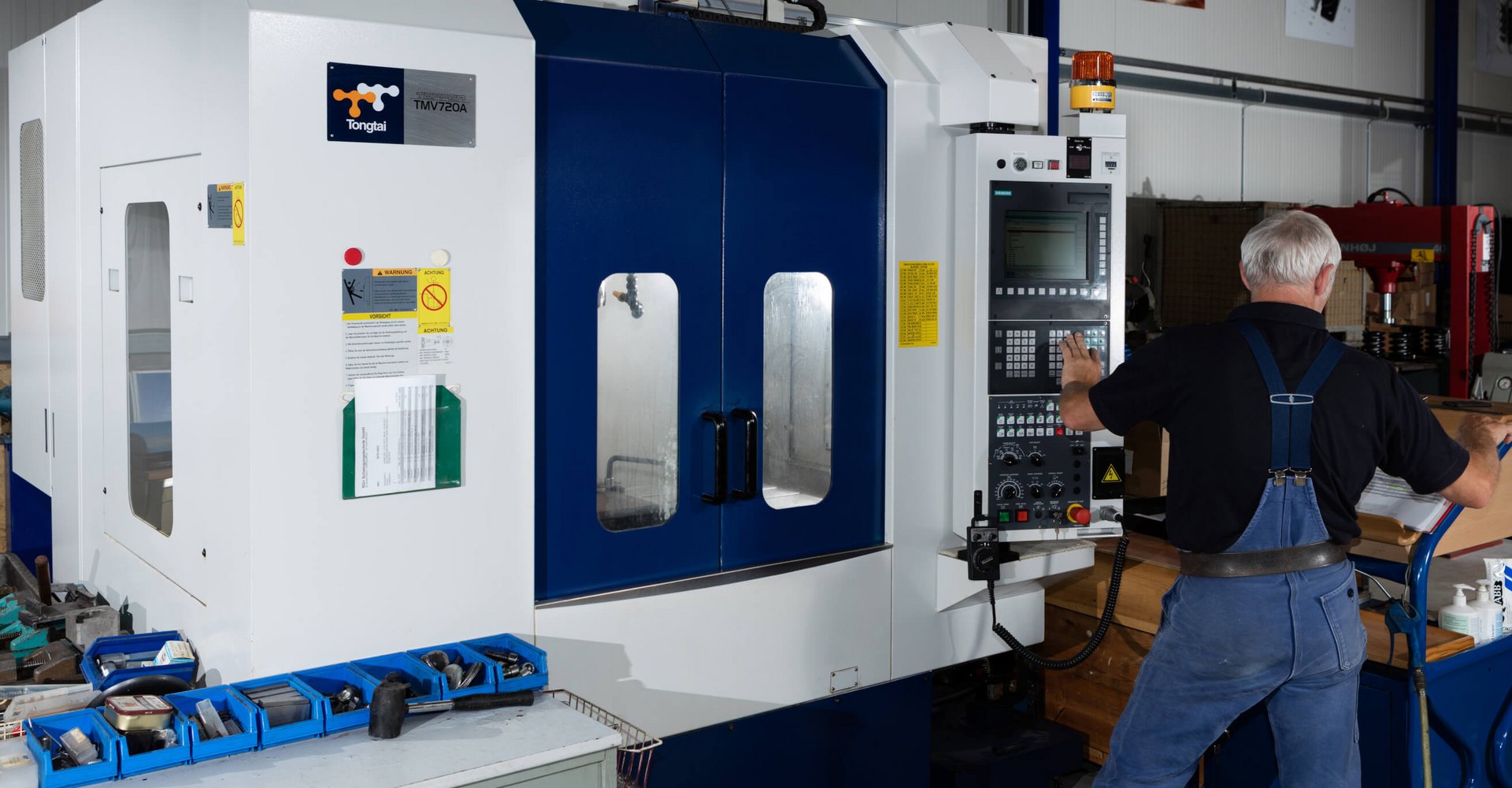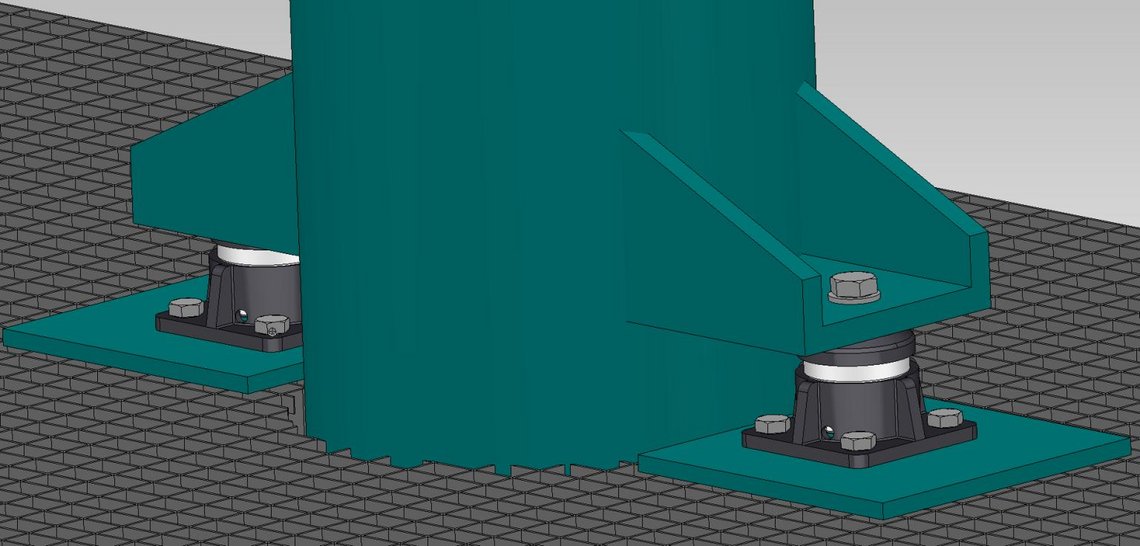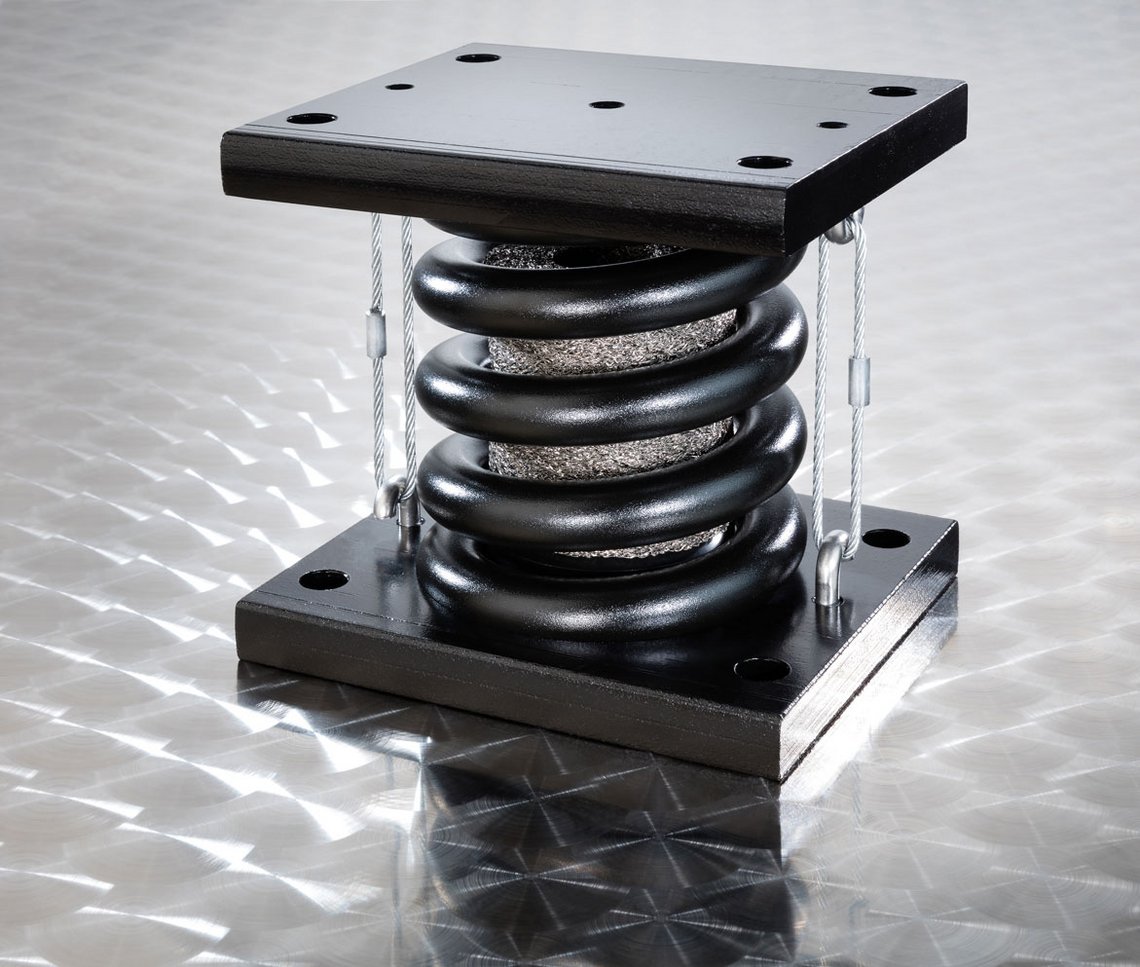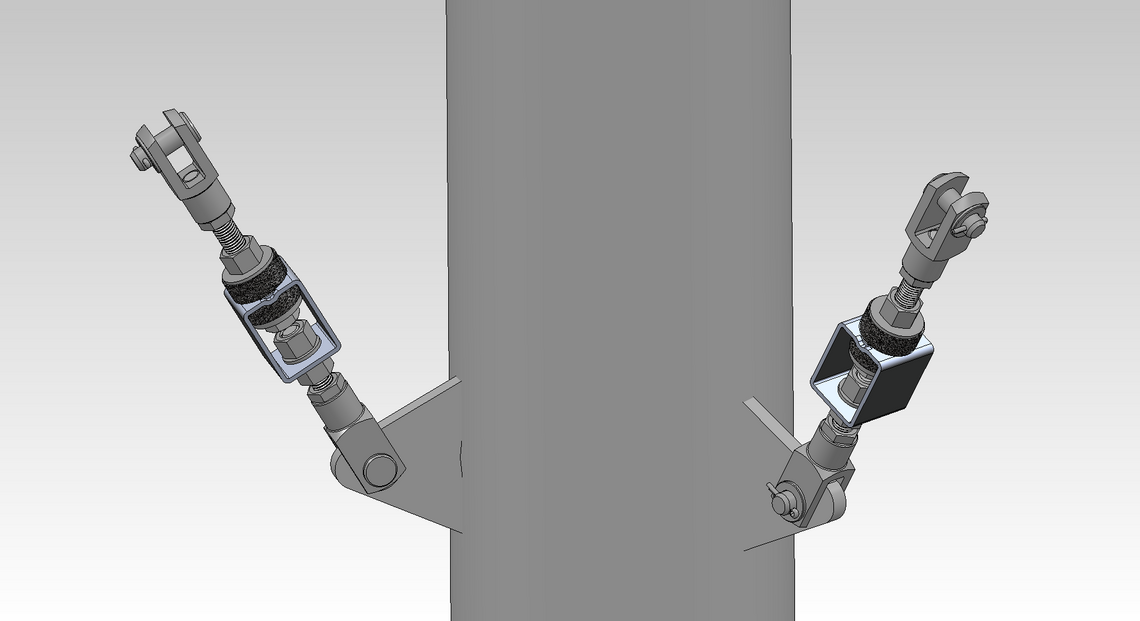Whitepaper
Anti-vibration component mounting
in mechanical and plant engineering
Short summary
The most important points for mounting by means of vibration dampers at a glance:
- Basically, all interrelated components should be supported
- Service life of the machines is greatly increased by anti-vibration dampers
- If you are unsure about the design, it is essential to consult a specialist
Introduction / problem
It is often the small things that have a big influence on the overall picture. This is also the case in mechanical and plant engineering when it comes to select the right vibration dampers. Especially from an economic point of view, the purchase of such decoupling elements represents a fraction of the total budget, but during operation it leads to the fact that the mounted components are protected and thus their service life is successively increased. Thus, a vibration-decoupled machine or a system equipped with vibration dampers is often more economical and also provides a more pleasant working environment.
Now, before thinking about which vibration dampers should be used, the question must first be asked as to which components should necessarily be supported by machine feet and how such a support can look.
In the first step, it is important to know that vibration damping can take place in two ways. A distinction is made between active and passive vibration damping. The difference is as follows:
figure 1: types of vibration damping
Source vibration damping:
Keeps the vibrations emitted by the machine away from the environment and thus from all other components and people by means of vibration dampers.
Receiver vibration damping:
Keeps the vibrations induced by the environment away from the machines by means of vibration dampers and thus protects them.
This document is intended to provide the user with a brief overview of precisely these elementary issues and to support him in his selection of the right vibration damper. However, it should be stated directly in advance that consultation with experts in this field is recommended in any case.
Solution of the problem
As described in figure 1, there are two ways in which one should decouple one's machines and apparatus from vibration. For active vibration damping, these applications could be pumps, fans, blowers or complete generator sets, which cause vibrations due to speed and emit them to the environment. For passive vibration damping, these could be silencers, SCR catalytic converters or exhaust gas heat exchangers.
Pipelines for exhaust gases and other fluids are often underestimated or ignored in first instance. Just like machines and apparatus they have to be decoupled in terms of vibration technology. Here in particular, thermal expansions often lead to stresses and thus produce cracks or deformations. Vibration dampers can compensate these expansions and thus prevent stress cracks, leaks or similar.
It is important to note that a system should be completely decoupled. Successful mounting with vibration dampers only works if all components are decoupled from their environment in this way.
Accordingly, it is important to know the following information or key figures in order to design the right vibration dampers:
figure 2: Characteristic values required for design
Speed or stroke rates:
This parameter is one of the two most important design criteria and therefore absolutely necessary. If the forcing frequencies in the system match the natural frequency of the vibration damper, the system will build up unintentionally. In addition, the correct tuning ratio between the natural frequency of the damper and the interference frequencies in the system influences the efficiency of the damper.
Design space and connection:
If the design space is limited, if the connection is restricted or if there are already fixed attachment points, this information must be specified.
Support force with centre of gravity:
The second elementary parameter for dimensioning a vibration damper. It is imperative that the damper absorbs both static and dynamic forces and remains elastic. If the centre of gravity is not in the middle of the system it is elementary to know the position.
External conditions:
Often it is the environmental conditions that preclude the use of certain vibration dampers. Accordingly, information about temperatures, possible contact with other substances or installation locations is helpful for a successful design.
Solutions of RG+ Schwingungstechnik
In terms of vibration damping, you have already landed at exactly the right address by reading these lines. RG+ Schwingungstechnik offers the following standard elements for the case of a vibration decoupling bearing in machine and plant construction:
Vibration damper GDZ:
(https://www.rgplus.de/en/products/pressure-tension-elements)
Vibration dampers of the GDZ series are the allrounder from RG+. As standard, they can be loaded both in compression and in tension. Depending on the design, the absorption of radial forces is also possible. This type of vibration damper consists of a KTL-coated housing and at least two damping cushions made of stainless steel. They are particularly compact and can either be bolted directly to the machine or integrated into the system by means of a height adjustment. Due to their design and the materials used, they are particularly resistant in non pH-neutral environments and at high temperatures.
They are used to mount silencers, heat exchangers, SCR catalytic converters or entire pipe strings.
Spring isolators:
(https://www.rgplus.de/en/products/spring-isolators)
Spring isolators serve especially as active vibration dampers. At the RG+ Schwingungstechnik, they are in the natural frequency range 3-9 Hz and are also equipped with either a damping cushion or viscous damping.
They are mainly used to mount pumps, fans, blowers or to support CHP modules. While vibration dampers of the GDZ series hardly deflect due to their progressivity especially in the high load range and are easy to handle in this way, the technical department should be consulted regarding the connection in the case of spring isolators.
In addition to that spring isolators can also be used in pipeline construction. In this case, the elements must be precisely matched to the existing loads so that they can already be delivered pretensioned to static load.
Vibration damper GAB:
(https://www.rgplus.de/en/products/weight-bearing-elements)
Vibration dampers of the GAB series do not necessarily serve as a pure bearing element. Vibration dampers of this series are often used to additionally stabilize pipelines, especially with regard to radial forces. For this purpose, three elements are arranged offset by 120°. GABs are often overdimensioned and thus designed to be particularly flexible so that radial movements of the system can be absorbed softly.
They are especially used for entire piping strings.
But why exactly use solutions from RG+ Schwingungstechnik? These are the three main reasons why you should consider vibration dampers from our company.
figure 6: advantages of RG+ vibration dampers
Lifetime:
Benefit from the fact that only metal components are installed in our dampers. Thus, we realize a service life of 10 years and higher.
Resistance:
No matter if heat or cold, acid or base. Our all-metal cushions work consistently well in a temperature range of -20 - 400°C, as well as in a non pH-neutral environment.
Compactness:
You don't have much space available? No problem, because all-metal pads realize a very high force absorption on a small surface.




